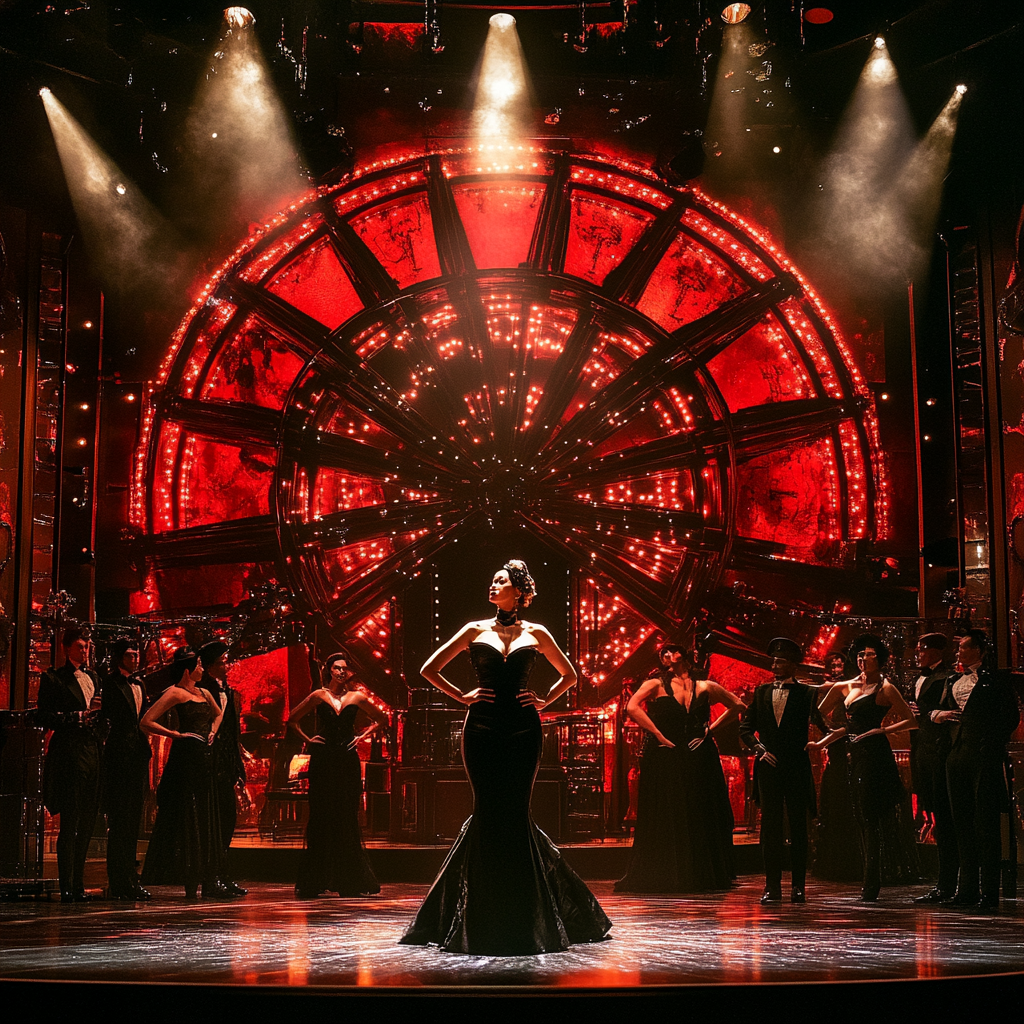The art of cabaret, which emerged in the late 19th century, combined various elements of dance, music and theater to create unique and memorable performances. It has become not only a symbol of freedom of expression, but also a cultural phenomenon that has had a significant influence on dance traditions around the world. In every corner of the globe, cabaret was perceived and interpreted differently, creating unique hybrid forms that combined local styles with the provocative energy of cabaret. In this article, we explore how cabaret has influenced dance traditions in different countries, adding its own unique grace and inspiration.
The origins of cabaret: The emergence of the genre and its key dance elements
Cabaret originated in France at the end of the 19th century and its origins can be found in the nightclubs and cafés of Paris. This genre united dance, music, satire and theatrical elements, creating unique shows. From the very beginning, the cabaret stood out for its freedom and improvisational spirit. The French cancan, with its dynamic high leg swings and full skirts, became a symbol of daring and independence on stage.
The original dance elements of cabaret included:
- Kankan: Complex acrobatic movements combined with fast rhythms.
- Burlesque: Sexy and playful dances that combined elements of theater and comedy.
- Flamenco and other ethnic dances: Incorporating passionate and dramatic movements.
- Elements of ballet: Grace and fluidity of movement that added elegance to the productions.
- Jazz dancing: Freedom and improvisation became key features of later cabarets.
These styles became the basis for the further spread of cabaret and its transformation into a world cultural phenomenon.
Cabaret and European dance culture: France, Germany, Italy
Cabaret became an integral part of European culture at the beginning of the 20th century. In France it continued to be the center of Parisian nightlife, but its influence began to spread to other European countries, bringing changes to local dance traditions.
In Germany, especially during the Weimar Republic, cabaret acquired a political connotation, mixing elements of satire and dance. German cabarets were distinguished by their intellectual depth and often used dancing as a way to protest against existing authority. These performances became an important element of cultural resistance and self-expression. In Italy, cabaret also adapted to local traditions, introducing more drama and theatricality into dance numbers, which allowed them to show not only physical grace, but also emotional feelings.
American cabaret: From burlesque to jazz rhythms
American cabaret culture developed a little differently than in Europe, but no less vibrant. The first elements of cabaret entered the United States at the beginning of the 20th century along with popular European shows, but American choreographers quickly adapted them to their audience and musical traditions. Burlesque has become an important part of American cabaret, bringing playfulness and sexuality, which reflected the development of American pop and entertainment culture.
Over time, American cabaret became associated with jazz, which gained enormous popularity in the 1920s and 30s. This musical genre is ideal for cabaret dance numbers due to its improvisational nature and freedom of expression. Jazz dances, in contrast to the more structured European dances, allowed dancers to be more spontaneous and experiment with movements, which gave cabaret even greater emotional intensity and variety.
Cabaret in Latin America: A Fusion of Passion and Folklore Traditions
In Latin America, cabaret has absorbed local folklore traditions, which makes it unique in its performance. Dance styles such as tango And salsa, had a significant impact on cabarets in the region. Latin American cabarets combined passion and drama local dance traditions, adding theatrical elements to them and evoking strong emotions in the audience.
Tango, with its sensual choreography and deep emotional movements, was ideal for a cabaret show, adding an element of passion and romance. In turn, salsa with its fast rhythms and vibrant movements added liveliness and dynamics. Latin American cabaret became a symbol of cultural fusion, combining traditional folk dances with elements of European and American cabaret.
Contemporary Cabaret: Dance Innovation on the World Stage
Today cabaret continues to evolve, remaining one of the most flexible and innovative forms dance art. Modern choreographers actively integrate elements of various dance styles into cabaret, such as hip-hop, contemporary and even street dancing. These innovations allow cabaret to remain relevant and attract new audiences.
Modern cabaret dances have become more dynamic and varied, but have not lost their main feature – interaction with the public and expression. Thanks to the use of modern technologies and multimedia elements, cabaret shows have become even more spectacular, enriched with various types of art, which allowed dancers and choreographers to embody the most daring ideas and experiment with movement.
Throughout its history, cabaret continues to influence world dance culture, introducing elements of innovation and courage. In different countries, cabaret has absorbed the features of local traditions, creating unique dance hybrids that inspire both artists and spectators. This art, full of grace, emotion and freedom of expression, remains relevant, constantly changing and transforming under the influence of modern trends.
In Europe, cabaret introduced elements of satire, expression and theatricality into dance traditions. It influenced the development of such styles as cancan, burlesque and jazz dancing, making them part of the cultural heritage of many countries.
Latin American cabaret has absorbed local folk dances such as tango and salsa, which give it more passion and emotion. These dances add special dynamics and rhythm, which distinguishes Latin American shows from European ones.

